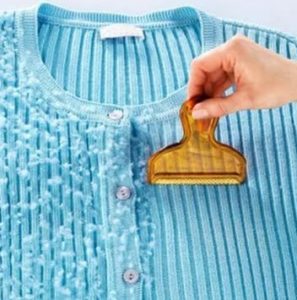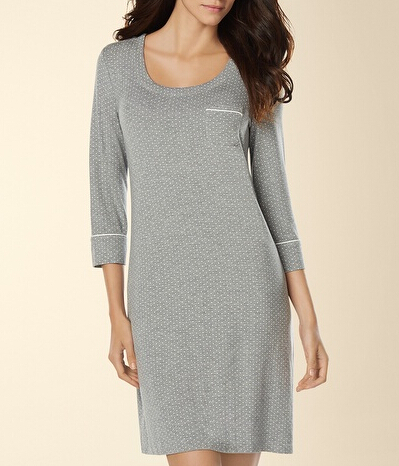 There is a lot of controversy about the natural origin of viscose. Most people know that this is an artificial fabric and classify it as a synthetic material. But this is not true!
There is a lot of controversy about the natural origin of viscose. Most people know that this is an artificial fabric and classify it as a synthetic material. But this is not true!
Viscose is a natural fabric. It is produced from artificially crushed wood. But its fibers have a 100% natural composition and appropriate properties. It is hygroscopic (absorbs moisture well), breathable (breathes well), does not accumulate static electricity, hypoallergenic and environmentally friendly.
Does viscose ripple?
 This is not a completely familiar term. This means whether pellets appear on the surface after washing and during the use of items made from it. Yes, viscose will peel. But here a lot depends on the quality of the material.
This is not a completely familiar term. This means whether pellets appear on the surface after washing and during the use of items made from it. Yes, viscose will peel. But here a lot depends on the quality of the material.
Reference. The appearance of pellets is not the rule, but the exception. If a problem arises, the easiest way is to purchase an inexpensive device for removing pellets from your favorite things.
How to prevent pilling
- Follow all requirements indicated on the product label. Wash on the indicated cycle in a mild detergent;
- Use laundry detergents designed to soften fabric fibers, which reduces pilling;
- add conditioner;
- immediately remove any lumps that appear;
- do not wash things in hot water;
- Do not rub the products when washing or twist them. Let's say just a gentle spin through terry cloth;
- It is better not to wash outerwear items, but to take them to dry cleaning.
If you remove the lumps that appear in time, you can do without a special device. Stationery tape will help get rid of them. You can also try cutting off the rolled fibers with a razor. Proceed with extreme caution so as not to damage the material. Pull it as tight as possible and then use the razor.
 Knitted items, including those made from 100% cotton, cough the most. Therefore the presence cotton containing viscose fabric, unfortunately, will not solve the problem. Synthetic fibers in the composition, on the contrary, increase resistance to pilling.
Knitted items, including those made from 100% cotton, cough the most. Therefore the presence cotton containing viscose fabric, unfortunately, will not solve the problem. Synthetic fibers in the composition, on the contrary, increase resistance to pilling.
Does viscose wrinkle?
Yes, it wrinkles, but not as much as cotton! Many items, after being washed and carefully dried on hangers or laid out horizontally, do not require ironing. If you still need to iron things, do not turn on the steam mode and do not dampen the fabric, as it will become less durable, wear out faster and lose its shape.
How to wash and care for viscose
 Since this fabric is especially vulnerable when wet, it needs to be washed carefully in a neutral detergent. Avoid using bleaches. The best thing wash viscose products manually, especially if it is important to maintain their shape.After washing, wrap especially delicate items in a terry towel, wring them lightly, and dry them by laying them flat.
Since this fabric is especially vulnerable when wet, it needs to be washed carefully in a neutral detergent. Avoid using bleaches. The best thing wash viscose products manually, especially if it is important to maintain their shape.After washing, wrap especially delicate items in a terry towel, wring them lightly, and dry them by laying them flat.
You can also resort to machine washing. Choose a gentle mode designed for delicate fabrics, since wet material loses its strength by 40%. Set the minimum spin speed. Temperature regime – +30 ºС.
 To improve the performance properties of viscose, synthetic fibers are added to its composition. At the same time, the material becomes more wear-resistant and practically does not wrinkle. If there are fewer synthetic additives in the fabric than viscose itself, then the material retains all the advantages of natural materials.
To improve the performance properties of viscose, synthetic fibers are added to its composition. At the same time, the material becomes more wear-resistant and practically does not wrinkle. If there are fewer synthetic additives in the fabric than viscose itself, then the material retains all the advantages of natural materials.
Attention! Do not dry laundry in direct sunlight. This causes the dyed fabric to fade.
Viscose is a serious competitor to cotton, both in its performance properties, appearance, and price. Feel free to purchase products made from this material, because they are made from natural raw materials and are not capable of harming your health!



 0
0






So far, I have only noticed that siblon trousers become stiff when wet, which makes them not very convenient to wash. But they are really pleasant to wear, don’t wrinkle too much and are breathable.
Viscose is not a natural fabric, but an artificial one. This means it is obtained from natural raw materials processed with chemical reagents. Natural fabrics include wool, silk, cotton and linen. . don't be misled.